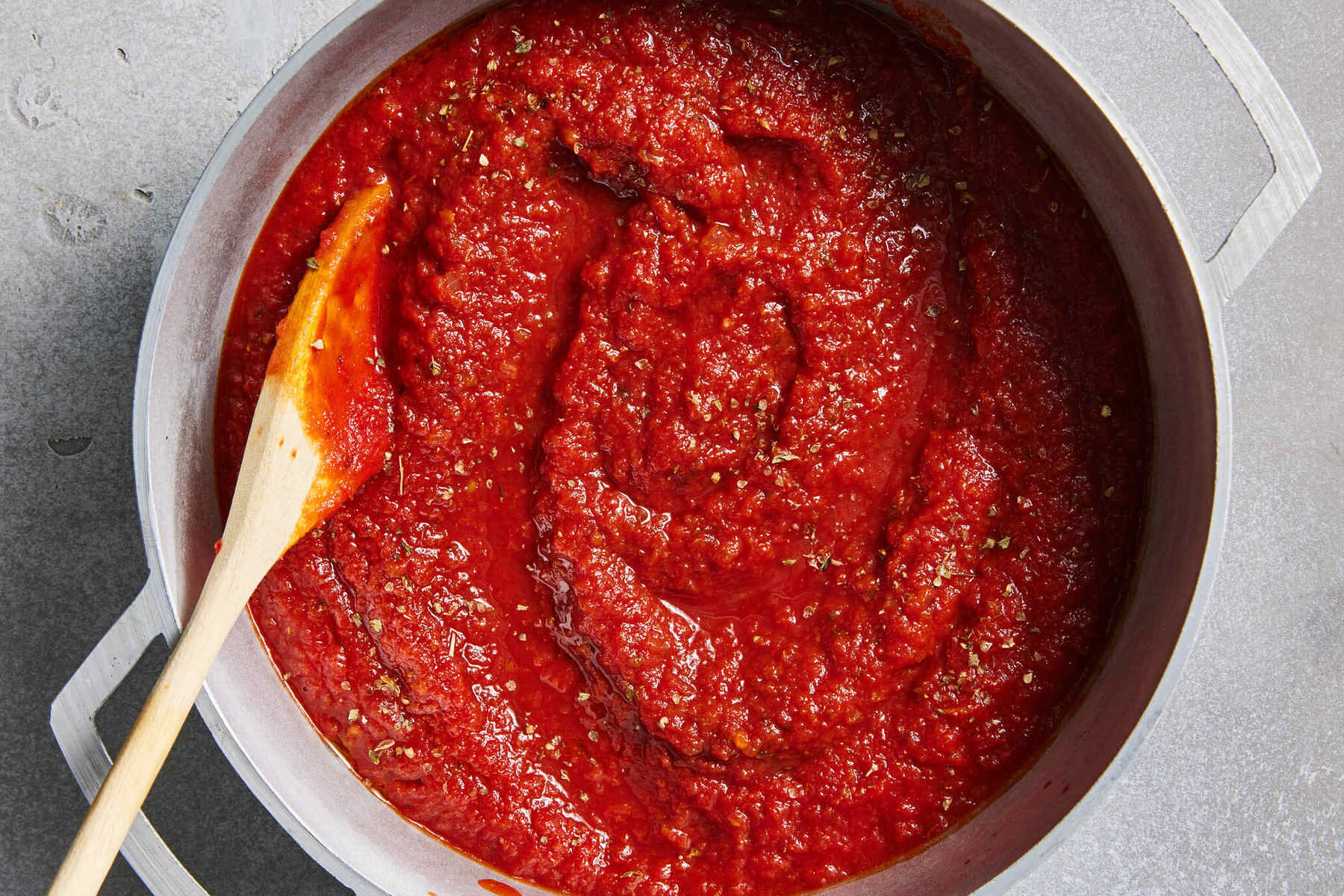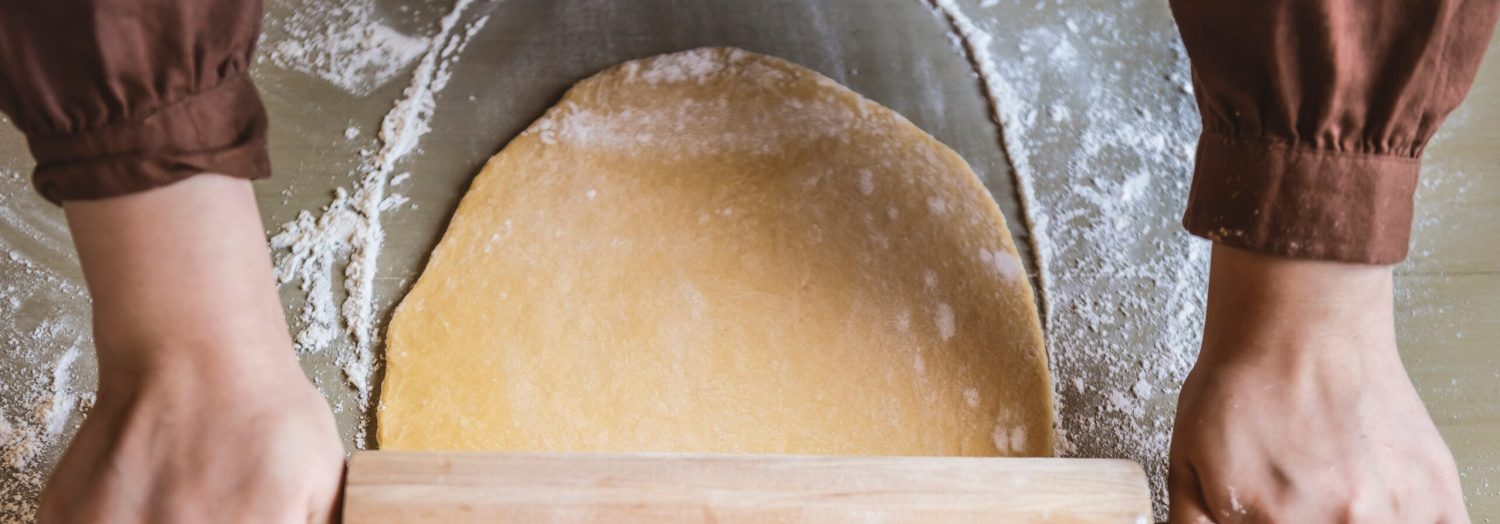Creating a homemade pizza sauce is a delightful way to elevate your pizza to new heights. This recipe combines the rich flavors of tomato sauce with aromatic herbs and spices, resulting in a sauce that's both simple and delicious. Perfect for spreading over your favorite pizza dough, this sauce is sure to impress your family and friends with its authentic taste and vibrant color.
Most of the ingredients in this recipe are common pantry staples, but you may need to check your spice rack for dried oregano and dried basil. These herbs are essential for achieving that classic pizza flavor. If you don't have them on hand, they are readily available in the spice aisle of any supermarket. Additionally, ensure you have fresh garlic for that aromatic touch.

Ingredients For Pizza Sauce Recipe
Tomato sauce: A smooth and rich base that forms the foundation of the sauce.
Dried oregano: Adds a warm, slightly bitter flavor that is quintessential to Italian cuisine.
Dried basil: Provides a sweet and aromatic note, enhancing the sauce's complexity.
Garlic: Freshly minced, it infuses the sauce with a pungent and savory depth.
Olive oil: Used to sauté the garlic, it adds a fruity richness to the sauce.
Salt: Enhances the overall flavor, bringing out the natural sweetness of the tomatoes.
Black pepper: Adds a subtle heat and earthiness to balance the sauce.
Technique Tip for This Sauce
To enhance the flavor of your pizza sauce, consider using fresh herbs instead of dried ones. Finely chop fresh oregano and basil, and add them towards the end of the simmering process. This will give your sauce a vibrant and aromatic finish. Additionally, if you prefer a slightly sweeter sauce, you can add a pinch of sugar to balance the acidity of the tomato sauce.
Suggested Side Dishes
Alternative Ingredients
Tomato sauce - Substitute with crushed tomatoes: Crushed tomatoes provide a similar texture and flavor, and can be seasoned to taste to mimic pizza sauce.
Dried oregano - Substitute with Italian seasoning: Italian seasoning contains oregano along with other herbs, providing a similar flavor profile.
Dried basil - Substitute with fresh basil: Fresh basil can be used in place of dried, offering a more vibrant flavor. Use about three times the amount of fresh basil as dried.
Minced garlic - Substitute with garlic powder: Garlic powder can be used when fresh garlic is unavailable, offering a similar garlic flavor. Use about ¼ teaspoon of garlic powder for each clove of garlic.
Olive oil - Substitute with vegetable oil: Vegetable oil can be used in place of olive oil, though it has a milder flavor.
Salt - Substitute with soy sauce: Soy sauce can add saltiness along with a bit of umami flavor, but use sparingly to avoid overpowering the sauce.
Black pepper - Substitute with white pepper: White pepper provides a similar heat and flavor profile, though it is slightly milder and less pungent.
Other Alternative Recipes Similar to This Sauce
How to Store or Freeze This Sauce
Allow the pizza sauce to cool completely at room temperature. This prevents condensation from forming inside the storage container, which could dilute the sauce and affect its flavor.
Transfer the cooled pizza sauce into an airtight container or a resealable plastic bag. If using a bag, ensure you remove as much air as possible before sealing to prevent freezer burn.
Label the container or bag with the date and contents. This helps you keep track of freshness and ensures you don't mistake it for another tomato-based delight lurking in your freezer.
For short-term storage, place the container in the refrigerator. The pizza sauce will stay fresh for up to a week, ready to be spread on your next homemade pizza masterpiece.
For long-term storage, pop the container into the freezer. The pizza sauce can be frozen for up to three months, maintaining its vibrant flavor and aroma.
When you're ready to use the frozen pizza sauce, transfer it to the refrigerator to thaw overnight. If you're in a hurry, you can also defrost it in the microwave or in a saucepan over low heat, stirring occasionally to ensure even thawing.
Once thawed, give the pizza sauce a good stir to reincorporate any separated ingredients, ensuring a smooth and consistent texture for your pizza.
If you find yourself with leftover pizza sauce after a pizza night, consider using it as a base for other dishes like pasta or soups, or even as a dipping sauce for breadsticks.
How to Reheat Leftovers
Gently warm the pizza sauce in a saucepan over low heat, stirring occasionally to ensure even heating and prevent sticking. This method preserves the sauce's rich flavors and aroma.
Use a microwave-safe bowl to reheat the pizza sauce in the microwave. Cover the bowl with a microwave-safe lid or plastic wrap, leaving a small vent for steam. Heat on medium power in 30-second intervals, stirring between each, until the sauce reaches the desired temperature.
For a quick and even reheating, place the pizza sauce in a heatproof bowl and set it over a pot of simmering water, creating a double boiler effect. Stir occasionally until the sauce is warmed through, ensuring it doesn't scorch or separate.
If you're planning to use the pizza sauce on a pizza or another dish that will be baked, simply spread the cold sauce directly onto the base and let the oven do the work. The heat from baking will naturally warm the sauce as it melds with the other ingredients.
Essential Tools for Making This Sauce
Saucepan: A saucepan is essential for heating the olive oil and simmering the sauce. Its deep sides help contain the sauce and allow for even cooking.
Stirring spoon: A stirring spoon is used to sauté the garlic and stir the sauce as it simmers, ensuring that all ingredients are well combined and do not stick to the bottom of the pan.
Garlic press: A garlic press can be used to mince the garlic quickly and efficiently, ensuring it is fine enough to release its full flavor when sautéed.
Measuring spoons: Measuring spoons are necessary for accurately measuring the oregano, basil, salt, and pepper to ensure the sauce is seasoned correctly.
Measuring cup: A measuring cup is used to measure the tomato sauce, ensuring you have the correct amount for the recipe.
Ladle: A ladle can be helpful for transferring the sauce from the saucepan to a container or directly onto the pizza once it has cooled.
How to Save Time on Making This Sauce
Prepare ingredients in advance: Measure and mince garlic, and mix dried oregano and basil ahead of time to streamline the cooking process.
Use canned tomato sauce: Opt for canned tomato sauce instead of making it from scratch to save time without compromising flavor.
Batch cooking: Double or triple the pizza sauce recipe and freeze portions for future use, reducing prep time for your next pizza night.
Simmer while multitasking: Let the sauce simmer while you prepare other pizza toppings or dough to maximize efficiency.

Pizza Sauce Recipe
Ingredients
Main Ingredients
- 2 cups Tomato Sauce
- 1 teaspoon Dried Oregano
- 1 teaspoon Dried Basil
- 1 clove Garlic minced
- 1 tablespoon Olive Oil
- ½ teaspoon Salt
- ¼ teaspoon Black Pepper
Instructions
- Heat olive oil in a saucepan over medium heat.
- Add minced garlic and sauté until fragrant.
- Add tomato sauce, oregano, basil, salt, and pepper.
- Simmer for 15-20 minutes, stirring occasionally.
- Let the sauce cool before using on pizza.
Nutritional Value
Keywords
More Amazing Recipes to Try 🙂
- Watermelon Feta Salad15 Minutes
- Ricotta Cheese Recipe40 Minutes
- Southern Coleslaw Recipe15 Minutes
- Garlic Sauce Recipe15 Minutes
- Swedish Meatball Sauce Recipe25 Minutes
- Taco Sauce Recipe15 Minutes
- Vodka Sauce Recipe40 Minutes
- Korean BBQ Sauce Recipe20 Minutes


Leave a Reply